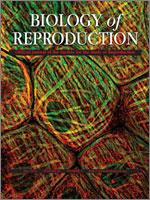In the ovary, initiation of follicle growth is marked by cuboidalization of flattened granulosa cells (GCs). The regulation and cell biology of this shape change remains poorly understood. We propose that characterization of intercellular junctions and associated proteins is key to identifying as yet unknown regulators of this important transition. As GCs are conventionally described as epithelial cells, this study used mouse ovaries and isolated follicles to investigate epithelial junctional complexes (tight junctions [TJ], adherens junctions [AJ], and desmosomes) and associated molecules, as well as classic epithelial markers, by quantitative PCR and immunofluorescence. These junctions were further characterized using ultrastructural, calcium depletion and biotin tracer studies. Junctions observed by transmission electron microscopy between GCs and between GCs and oocyte were identified as AJs by expression of N-cadherin and nectin 2 and by the lack of TJ and desmosome-associated proteins. Follicles were also permeable to biotin, confirming a lack of functional TJs. Surprisingly, GCs lacked all epithelial markers analyzed, including E-cadherin, cytokeratin 8, and zonula occludens (ZO)-1alpha . Furthermore, vimentin was expressed by GCs, suggesting a more mesenchymal phenotype. Under calcium-free conditions, small follicles maintained oocyte-GC contact, confirming the importance of calcium-independent nectin at this stage. However, in primary and multilayered follicles, lack of calcium resulted in loss of contact between GCs and oocyte, showing that nectin alone cannot maintain attachment between these two cell types. Lack of classic markers suggests that GCs are not epithelial. Identification of AJs during GC cuboidalization highlights the importance of AJs in regulating initiation of follicle growth.
How to translate text using browser tools
8 February 2012
Characterization and Significance of Adhesion and Junction-Related Proteins in Mouse Ovarian Follicles
Jocelyn M. Mora,
Mark A. Fenwick,
Laura Castle,
Marianne Baithun,
Timothy A. Ryder,
Margaret Mobberley,
Raffaella Carzaniga,
Stephen Franks,
Kate Hardy
ACCESS THE FULL ARTICLE

Biology of Reproduction
Vol. 86 • No. 5
May 2012
Vol. 86 • No. 5
May 2012
adhesion
cell shape
follicle
junctions
ovary




